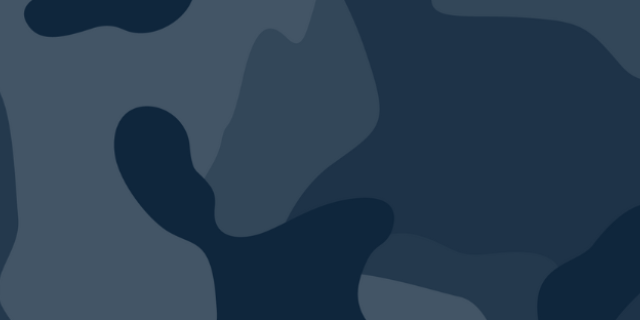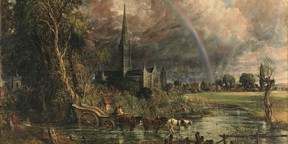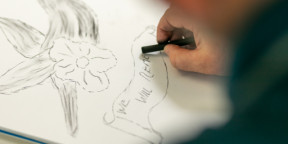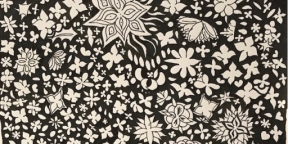Art Therapy
"Art making can open up doors to the mind and body in ways words can’t and may help change how memories are stored. Art Therapy provides an opportunity for a veteran to reflect on their experiences in the military and make sense of them by tapping into all the senses using art," Sophia Cowx, Senior Art Therapist at Combat Stress.
What is art therapy?
Art therapy is a specialist psychological therapy that allows veterans to use art making to make sense of their past experiences.
It provides a way to express and communicate past and current experiences, including establishing links between the events in the past and what’s presently happening in their life. It can be used as an alternative to talking therapies.
“Art helps you to put down in painting something that you might not be able to verbalise and those tools have been fundamental in the healing process for me." Tom, RAF veteran who found a love of art through his treatment for PTSD with Combat Stress
During an art therapy session, a veteran is offered a theme to respond to that relates to their issues. Their creative response can be made using pencils, pens or paints. Some veterans may choose to make collages, use clay or items from around the home to create three-dimensional art.
Although art making comprises a big part of art therapy, veterans will also spend time talking with their therapist and use the sessions as time to think about, reflect on and make sense of their experiences in the military.
Why use art therapy?
Art and creativity play a key role in our specialist treatment for veterans with complex mental health issues. Veterans have the chance to explore art therapy during treatment to help them express their emotions and find a way to explore their mental health issues. A veteran might be referred to art therapy if they have thoughts and feelings that they’re finding difficult to connect with and give expression to through words alone.
“I used to draw all the time as a kid and would ignore everything to create a fantasy world by sketching. I lost that ability somewhere along the way, but art therapy sessions made me realise if I can express an iota of an emotion onto paper then I can get it out of my head.” Joe, Army veteran who took part in our intensive treatment programme for PTSD
When is art therapy used?
Art therapy is typically introduced to a veteran’s treatment journey after they’ve gone through our building resilience treatment phase. This ensures they have the tools and skills to cope with and manage their mental health better before undertaking art therapy where, in a safe space, they are able to process traumatic events.
When starting art therapy, many veterans are often uncertain about how it can be beneficial or think they need to be good at art making. Art therapy doesn’t require any previous experience or skill in art making. Each session is designed to give veterans a space of non-judgement to explore and connect with their senses to help process their trauma.
Art making can open doors to the mind and body and involves engaging and connecting with your senses and emotions. Through art making, veterans learn to recognise their feelings and senses and link those to their experiences, integrating the two and making sense of their relationship.
Art therapy at Combat Stress is delivered both 1-2-1 and through group therapy. It can be undertaken in person or online. When sessions take place online, they will mirror what would happen in an art therapy room. Our art therapists carefully observe body language and engagement in the art making to ensure all attendees benefit as much as possible from each session.
“Veterans often go into art therapy with apprehension and uncertainty but will open up throughout the process. One of the main aims of art therapy here at Combat Stress is to help veterans move through their past experiences and enable them to get on with their life now,” Kirsty Mackay, Art Therapist at Combat Stress.
Art making can have a profound effect on veterans with complex mental health issues.
Watch our video below to find out more about art therapy.
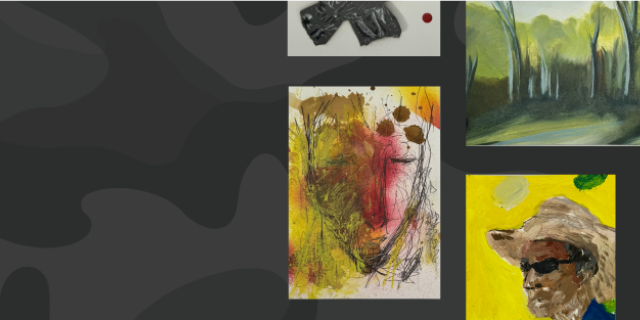
Explore our Secret Postcard Auction
Looking at art engages our intellect, emotions, senses, and imagination. It can reduce stress, improve brain function, and help us refresh.
Explore how getting creative at home can help you relax and boost your mental health.
Your Creative Challenges
Getting creative can help boost your mental health
Getting creative at home can help you relax and boost your mental health. Our Art Therapy team have shared how to can get a creative workout and it's great to see you taking part.

